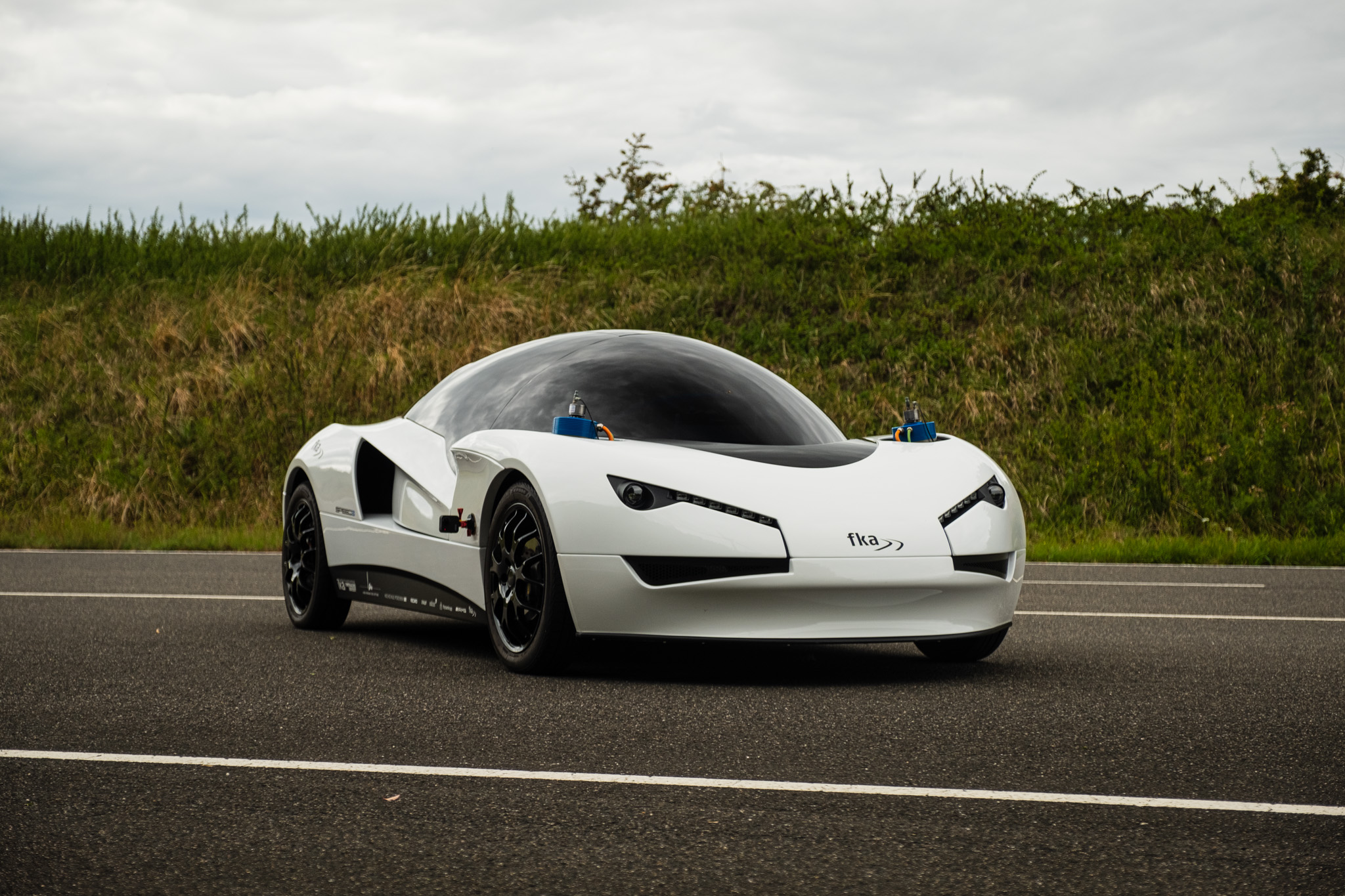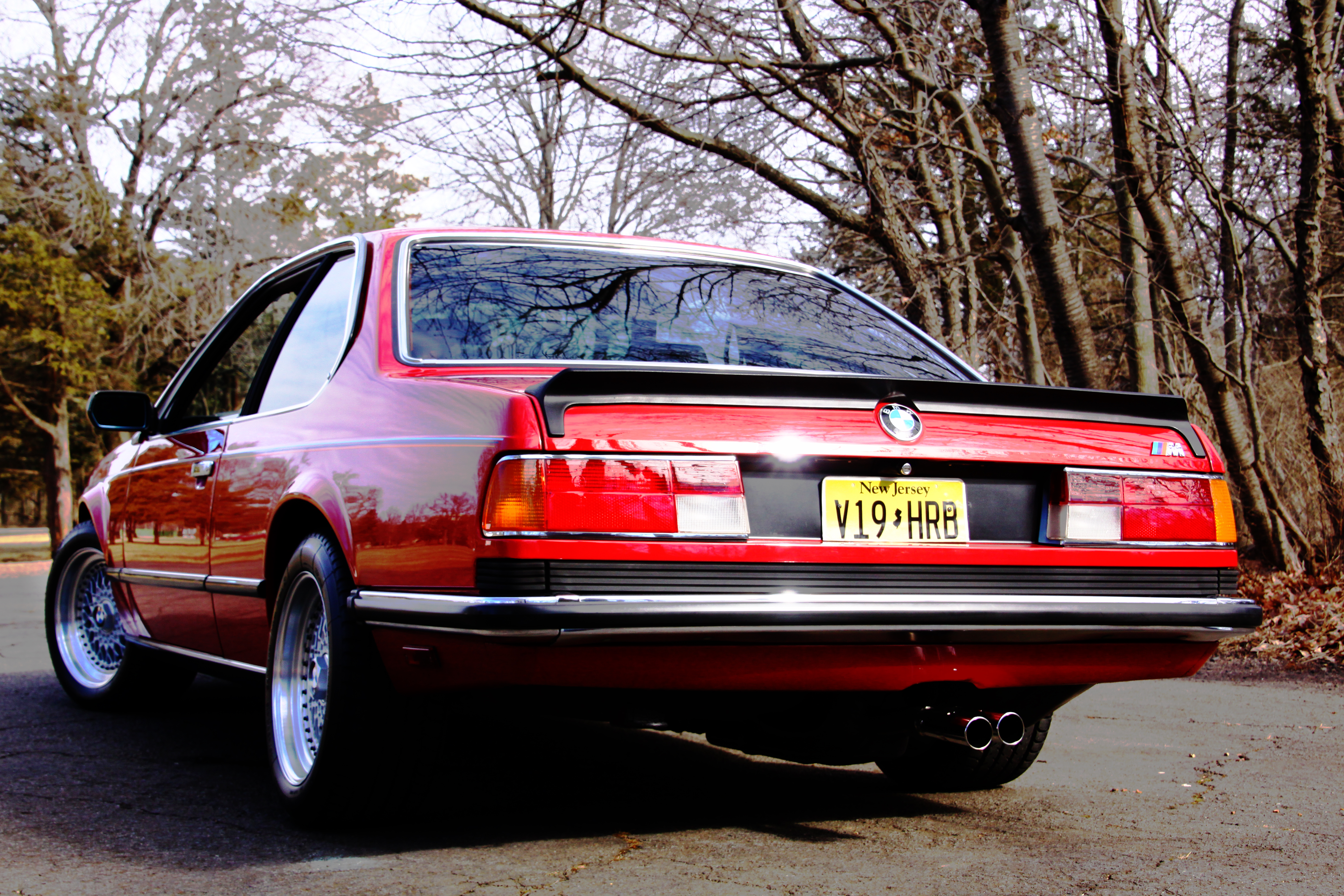|
BMW E31
The BMW E31 is the first generation of the BMW 8 Series. It is a grand tourer built by BMW from 1990 to 1999 as a 2-door coupé, powered by either a V8 or V12 engine. Whilst it did supplant the original E24 based 6 Series in 1990, it was not a direct successor, but a new model class with a substantially higher price and performance than the 6 Series. Development Development of the 8 Series began in July 1981, with the design phase reaching completion in 1986, although the launch was delayed due to still-strong 6 Series sales. The 8 Series debuted at the Frankfurt Motor Show (IAA) in early September 1989. The 8 Series was designed to move beyond the market of the original 6 Series. The 8 Series had substantially improved performance, as well as a far higher purchase price. Over 1.5 billion Deutsche Marks were spent on total development ($1.13 billion USD or €990 million in 2025). BMW used CAD tools, still unusual at the time, to design the car's all-new body. Combined w ... [...More Info...] [...Related Items...] OR: [Wikipedia] [Google] [Baidu] |
BMW 8 Series (G15)
The second-generation of the BMW 8 Series consists of the BMW G14 (convertible version), BMW G15 (two-door coupe version) grand tourers and BMW G16 (four-door "Gran Coupe" sedan version) executive cars ( E). The G14/G15/G16 generation has been in production since 2018, and is often collectively referred to as the G15. It is the successor to the BMW 6 Series (F06/F12/F13) range and marks the return of the BMW 8 Series nameplate after nearly two decades, which was previously produced as the E31 until its discontinuation in 1999. The G15 is powered by turbocharged six-cylinder petrol, six-cylinder diesel, and V8 petrol engines, all mated to an 8-speed automatic transmission. While the initial release of models all included all-wheel drive, a rear-wheel drive version of the base 840i and 840d was later made available for sale. The M8 models (designated F91/F92/F93) were unveiled in June 2019 and are powered by the twin-turbocharged BMW S63 V8 petrol engine. Development and la ... [...More Info...] [...Related Items...] OR: [Wikipedia] [Google] [Baidu] |
BMW Z1
The BMW Z1 is the first model in BMW's line of Z series roadsters (two-seater convertibles), and was produced in limited numbers from 1989 to 1991. The Z1 is unique for its plastic body panels and vertically sliding doors which drop into the door sills. It is one of the first BMWs to use a multi-link rear suspension. The sole drivetrain specification is the 2.5-litre straight-six engine and 5-speed manual transmission from the E30 325i. In 1995, the Z1's successor, the mass-produced Z3, began production. Development and launch At the start of 1985, BMW set up a division called BMW Technik GmbH to develop concepts for new vehicles and technologies. The director of BMW Technik GmbH was Ulrich Bez, who oversaw the Z1's development. Control of the project was turned over to Klaus Faust when Bez left BMW in October 1988. The lead designer was Harm Lagaay. In August 1985, the BMW board gave approval to further develop the BMW Technik's first concept vehicle, the Z1. A year l ... [...More Info...] [...Related Items...] OR: [Wikipedia] [Google] [Baidu] |
Drive-by-wire
Drive by wire or DbW in the automotive industry is the technology that uses electronics or electro-mechanical systems in place of mechanical linkages to control driving functions. The concept is similar to fly-by-wire in the aviation industry. Drive-by-wire may refer to just the propulsion of the vehicle through electronic throttle control, or it may refer to electronic control over propulsion as well as steering and braking, which separately are known as steer by wire and brake by wire, along with electronic control over other vehicle driving functions. Driver input is traditionally transferred to the motor, wheels, and brakes through a mechanical linkage attached to controls such as a steering wheel, throttle pedal, hydraulic brake pedal, brake pull handle, and so on, which apply mechanical forces. In drive-by-wire systems, driver input does not directly adjust a mechanical linkage, instead the input is processed by an electronic control unit which controls the vehicle ... [...More Info...] [...Related Items...] OR: [Wikipedia] [Google] [Baidu] |
Manual Transmission
A manual transmission (MT), also known as manual gearbox, standard transmission (in Canadian English, Canada, British English, the United Kingdom and American English, the United States), or stick shift (in the United States), is a multi-speed motor vehicle Transmission (mechanical device), transmission system where gear changes require the driver to manually select the gears by operating a gear stick and clutch (which is usually a foot pedal for cars or a hand lever for motorcycles). Early automobiles used ''sliding-mesh'' manual transmissions with up to three forward gear ratios. Since the 1950s, ''constant-mesh'' manual transmissions have become increasingly commonplace, and the number of forward ratios has increased to 5-speed and 6-speed manual transmissions for current vehicles. The alternative to a manual transmission is an automatic transmission. Common types of automatic transmissions are the Automatic transmission#Hydraulic automatic transmissions, hydraulic automatic ... [...More Info...] [...Related Items...] OR: [Wikipedia] [Google] [Baidu] |
BMW M6
The BMW M6 is a high-performance version of the 6 Series marketed under the BMW M sub-brand from 1983 to 2019 (with a hiatus from 1990 to 2004). Introduced in the coupe body style, the M6 was also built in convertible and fastback sedan ('Gran Coupe') body styles for later generations. An M6 model was built for each of the first three generations of the 6 Series. Production of the M6 ended in 2019 and it was replaced by the BMW M8 (F91/F92/F93) in 2019. E24 M635CSi/M6 (1983–1989) The M6 lineage began in 1983 with the ''M635CSi'' model of the E24 6 Series range, which was powered by the M88/3 DOHC straight-six engine (which was a modified version of the engine used in the BMW M1 supercar). In most countries, the model was badged the M635CSi, however the equivalent model in North America and Japan was simply badged in "M6". The European-specification M635CSi used the M88/3 engine (without a catalytic converter), which generated at 6,500 rpm and at 4,500 rpm. The ... [...More Info...] [...Related Items...] OR: [Wikipedia] [Google] [Baidu] |
Computer-aided Design
Computer-aided design (CAD) is the use of computers (or ) to aid in the creation, modification, analysis, or optimization of a design. This software is used to increase the productivity of the designer, improve the quality of design, improve communications through documentation, and to create a database for manufacturing. Designs made through CAD software help protect products and inventions when used in patent applications. CAD output is often in the form of electronic files for print, machining, or other manufacturing operations. The terms computer-aided drafting (CAD) and computer-aided design and drafting (CADD) are also used. Its use in designing electronic systems is known as ''electronic design automation'' (''EDA''). In mechanical design it is known as ''mechanical design automation'' (''MDA''), which includes the process of creating a technical drawing with the use of computer software. CAD software for mechanical design uses either vector-based graphics to depict t ... [...More Info...] [...Related Items...] OR: [Wikipedia] [Google] [Baidu] |
Deutsche Mark
The Deutsche Mark (; "German mark (currency), mark"), abbreviated "DM" or "D-Mark" (), was the official currency of West Germany from 1948 until 1990 and later of unified Germany from 1990 until the adoption of the euro in 2002. In English, it was typically called the "Deutschmark" ( ). One Deutsche Mark was divided into 100 pfennigs. It was first issued under Bizone, Allied occupation in 1948 to replace the Reichsmark and served as the Federal Republic of Germany's official currency from its founding the following year. On 31 December 1998, the Council of the European Union fixed the irrevocable exchange rate, effective 1 January 1999, for German mark to euros as DM 1.95583 = €1. In 1999, the Deutsche Mark was replaced by the euro; its coins and banknotes remained in circulation, defined in terms of euros, until the introduction of euro notes and coins on 1 January 2002. The Deutsche Mark ceased to be legal tender immediately upon the introduction of the euro—in contr ... [...More Info...] [...Related Items...] OR: [Wikipedia] [Google] [Baidu] |
Frankfurt Motor Show
The International Motor Show Germany or International Mobility Show Germany, in German known as the ''Internationale Automobil-Ausstellung'' (''IAA'' – International Automobile Exhibition), is one of the world's largest mobility trade fairs. It consists of two separate fairs, that subdivided in 1991. While the ''IAA Mobility'' displays passenger vehicles, motorcycles and bikes, the ''IAA Transportation'' specializes in commercial vehicles. Before the separation, the show was held solely at the Messe Frankfurt. In 2021, the IAA adopted the ''New Mobility World'' concept, formats and business model, rebranded to IAA Mobility, and moved to Munich. The IAA is organized by the Verband der Automobilindustrie (VDA – Association of the German Automotive Industry) and is scheduled by the Organisation Internationale des Constructeurs d'Automobiles (OICA), who recognize the IAA as one of the "big five" most prestigious auto shows worldwide. History At the turn of the 20th century ... [...More Info...] [...Related Items...] OR: [Wikipedia] [Google] [Baidu] |
BMW 6 Series
The BMW 6 Series is a range of grand tourers produced by BMW since 1976. It is the successor to the E9 Coupé and is currently in its fourth generation. The first generation BMW E24 6 Series was available solely as a two-door coupé and produced from 1976 to 1989, when it was supplanted by the larger BMW 8 Series (E31). When the 6 Series nameplate was revived in 2004 for the second generation, the BMW E63/E64 6 Series, the coupé was joined by a convertible body style. The third generation F06/F12/F13 6 Series debuted in 2011 as a coupé and convertible, and a sedan variant known as the "Gran Coupé" in 2012. When the F06/F12/F13 6 Series ended production, the "Gran Coupé"/coupé/convertible models have been shifted into the more upmarket BMW 8 Series (G15) nameplate. The fourth generation 6 Series, the G32 6 Series, debuted in mid-2017 and is offered only as a fastback body style to complement the BMW 5 Series (G30) sedan/wagon. The first generation 6 Series was derived fr ... [...More Info...] [...Related Items...] OR: [Wikipedia] [Google] [Baidu] |
BMW E24
The BMW E24 is the first generation of BMW 6 Series range of grand tourer cars, which was produced from January 1976 to 1989 and replaced the BMW E9 coupé. The E24 was produced solely in a 2-door coupé body style. All models used petrol straight-six engines, with the majority (aside from the M635CSi/M6 model) using a version of the BMW M30 engine family. The E24 shared many parts with the BMW 5 Series (E12), E12 5 series, and in 1982 was updated with parts from the newly released BMW 5 Series (E28), E28 5 series. The M635CSi is the first of the BMW M6 model line and is powered by the BMW M88#Versions, M88/3 straight-six engine. In North America, the vehicle is badged as "M6" and uses the less powerful BMW S38 engine. The eventual successor to the nameplate, the BMW 6 Series (E63), E63 6 Series, was released in 2004 after a 16-year hiatus. Although the BMW 8 Series (E31), E31 8 Series was introduced as production of the E24 was ending, the 8 Series is considered a sep ... [...More Info...] [...Related Items...] OR: [Wikipedia] [Google] [Baidu] |






